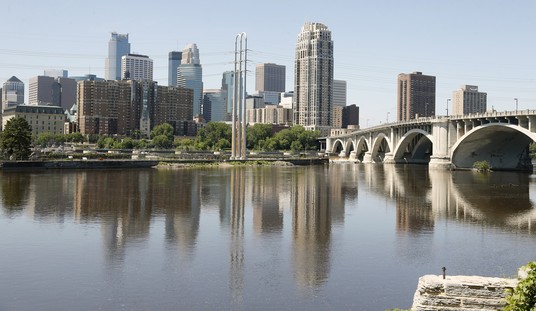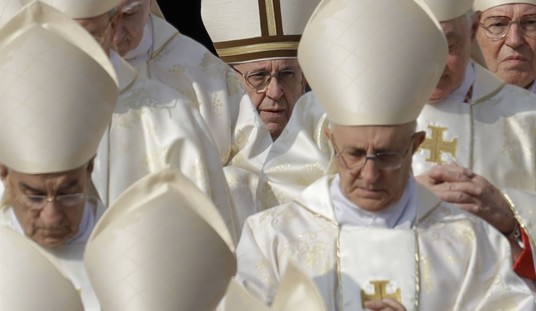There are far too many true believers among journalists, all eager to join AP’s Seth Borenstein in declaring this the long-awaited summer of record-breaking heat waves. As it turned out, the recent brief spell of uncomfortably hot weather passed quickly through the country’s mid-section, on to the East Coast, and out over the Atlantic.
Yes, there are no guarantees that more hot weather will not follow in the footsteps of the mid-June event. The previous year gave us a comparatively moderate summer, at least in most top-tier states. Denizens of the rural Midwest barely saw highs reach 90 degrees. F. by the end of summer 2024.
Reader, please recall that our forebears in the 1930s were not so lucky as we are today. Air-conditioning had just been invented. The air conditioning that existed then was limited to a few scattered upscale restaurants and movie theaters.
The second and third weeks of July 1936 still stand as the singular heat wave that culminated among a series of dust-bowl-ridden summer droughts beginning in 1931. The recurring drought persisted until nearly the end of the Great Depression decade. Clouds of dust rose each summer from the parched wheat fields of Kansas and Oklahoma, turning the midday sun red as seen from the prairies all the way to the Atlantic Ocean.
City dwellers in the Midwest, whenever they could, moved out with relatives on the farm to escape the worst of it. Others, not so lucky and confined to city apartments, moved cots up onto the rooftops for night-time relief under the stars.
In July 1936, the granddaddy of all US heatwaves arrived and slowly moved its way eastward across the Plains and Midwest to the East Coast. Fourteen all-time state high-temperature records were established from Nebraska to New Jersey that year. Consecutive days reaching over 100 degrees. F and lasting more than a week were common throughout the region.
Recommended
Wisconsin saw its all-time record of 114 degrees. F set on July 13, 1936. The highs across the northern states were more typical of Phoenix, Arizona, or Death Valley, California.
There is no logic in the argument that carbon dioxide (emitted from automobiles and sundry other combustion sources) had anything to do with the 1930s Dust Bowl. It had to do with ocean circulation patterns that prevented moisture in the atmosphere over the Pacific and Gulf of Mexico from reaching northward across the parched lands, and from antiquated agricultural practices that permitted bare soil to be carried aloft. Millions of acres of productive soil were gone with the wind by decade's end.
Fast-forward to 2025. This season has generally seen adequate rainfall, even excessive in some areas, resulting in flash floods, such as the one that has claimed nearly a hundred lives in Central Texas. But we also recall the Johnstown flood of 1889 that took the lives of more than 2,200 Pennsylvanians and remains to this day the single worst flash flood in US history.
Abundant rainfall is never a precursor to prolonged drought. And if severe drought is necessary for recurring heat waves, this may not be the year for new records, despite what Mr. Borenstein may suggest.
But time will tell.
In the meantime, there is the matter of what role carbon dioxide—that dreadful greenhouse gas—plays in the atmosphere of our planet.
Yes, the atmospheric concentration of CO2 has risen from an estimated 310 parts per million in the mid-1930s to about 421 ppm today. But so what?
The US Environmental Protection Agency declared CO2 an air pollutant in 2009, citing its potential role in triggering an uncontrolled greenhouse effect. Despite the EPA's ruling, there are now cogent arguments that support the position that CO2 has already contributed the greater part of its ability to trap infrared radiation in the troposphere.
The saturation of its heat-retention capability, essentially reached at about 400 ppm, would assure us that additional increments contributed by CO2 emissions will have a negligible effect in the future. Water vapor, by far the most potent player in the greenhouse process, has by the beginning of the 21st Century so dominated the weaker absorption bands of carbon dioxide that CO2 will no longer make a significant contribution to future temperature rises.
What media mavens should finally acknowledge is the fact that the much-maligned CO2 is the sine quo non for the existence of life on our planet. Plants require it for photosynthesis. The creation of a vast panoply of food materials (including carbohydrates, lipids, and proteins) by plants makes animal life (including for us humans) possible.
Steadily rising CO2 over the near term can only mean that plants will once again begin to enjoy an abundance of that essential building-block gas, after it had significantly diminished in concentration during the Ice Ages. All’s well that ends well.
Enter now the under-reported role of the sub-oceanic volcanoes. Last summer, a massive submarine volcano erupted in Tonga in the South Pacific. The eruption released such a large volume of CO2 that climate experts have had to readjust their calculations (computer models). They now concede that the contemporary rise in atmospheric CO2 has not been due primarily to the combustion of fossil fuels. Those same previously underappreciated volcanoes have made a much larger contribution to the rise in CO2 than previously thought.
This stark admission will have a profound impact on energy policy, ultimately benefiting humanity worldwide.
We do not appear to be headed for a climate crisis, after all, Virginia.
William D. Balgord, Ph.D. (geochemistry), Environmental & Resources Technology, Inc. Middleton, Wisc

























Join the conversation as a VIP Member